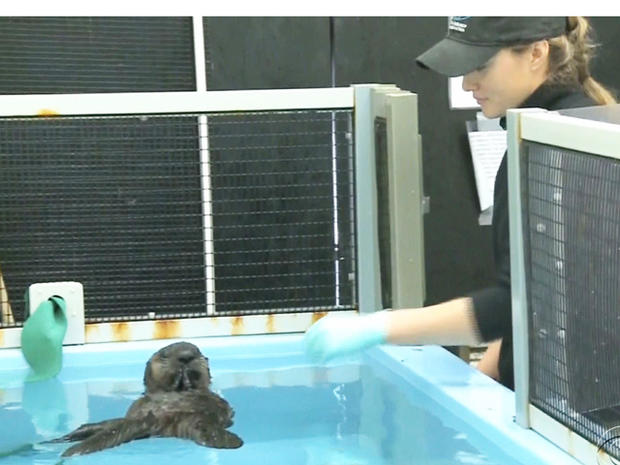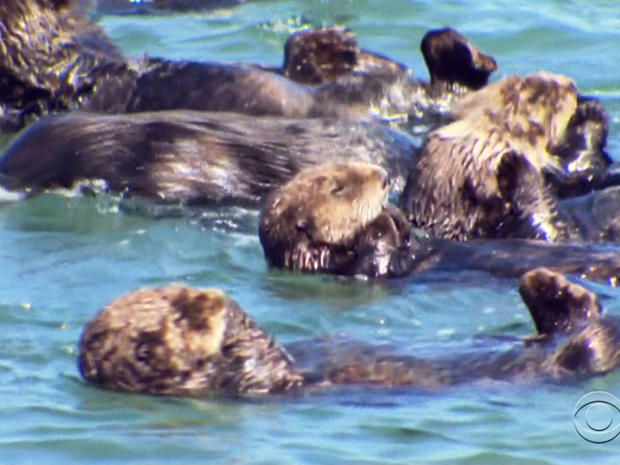Against all odds, otters make a comeback in Calif.
(CBS News) MONTEREY, Calif. -- Over generations, humans nearly wiped out one of the world's most endearing creatures, the sea otter. Slowly, the species is making a comeback, and this time it's thanks to humans.
Although they are a threatened species protected by federal law, the sea otters that live along the central California coast seem not to have a care in the world. The latest count shows their numbers up slightly, to almost 3,000.
A lot of the credit is going to Dr. Mike Murray and the otter rescue team from the Monterey Bay Aquarium. This year the sea otters produced a record number of pups -- some from orphan otters saved by Murray.
"These were orphans that came in that we reared up to a point where they were able to handle solid food," says Murray, who has worked to save otters for 20 years.
People love otters because they're cute, but that's not necessarily their nature.
"I like to consider them sea wolverines," Murray says. "They are not very friendly. They're rather pugnacious."
Since otters learn from their mothers how to hunt and feed, orphaned pups are unlikely to survive in the wild. So the orphans rescued by the aquarium have to be taught.
Conservationists fight to save giant panda in China
Hong Kong customs seize millions of dollars in endangered species cargo
Unusual measures to save endangered Sumatran rhino
A decade ago, the aquarium tried using human surrogates, who would play the role of otter mother, even showing pups how to dive for shells and break them with rocks. But the aquarium gave up on that practice.
"We're not very good sea otters," Murray says. "We're not only not that cute, but we just can't do what they do."
But it turned out some of the female otters who are part of the aquarium's otter exhibit make excellent surrogate mothers.
Watch: Sea otter shoots hoops for health, below.
Murray agrees the otters in the aquarium are much more than something to look at.
"Everyone works for a living over there," he says.
With tags and implanted tracking devices, Murray can follow the success of the animals he helped rescue, raise and release. Some have now become grandparents.
"There's a lot of blood, sweat and tears that goes into working with these animals, and to see it work is just amazing," he says.
The hope is to increase the otter population to well over 3,000 in the coming years. In a population so fragile, every animal is precious.


